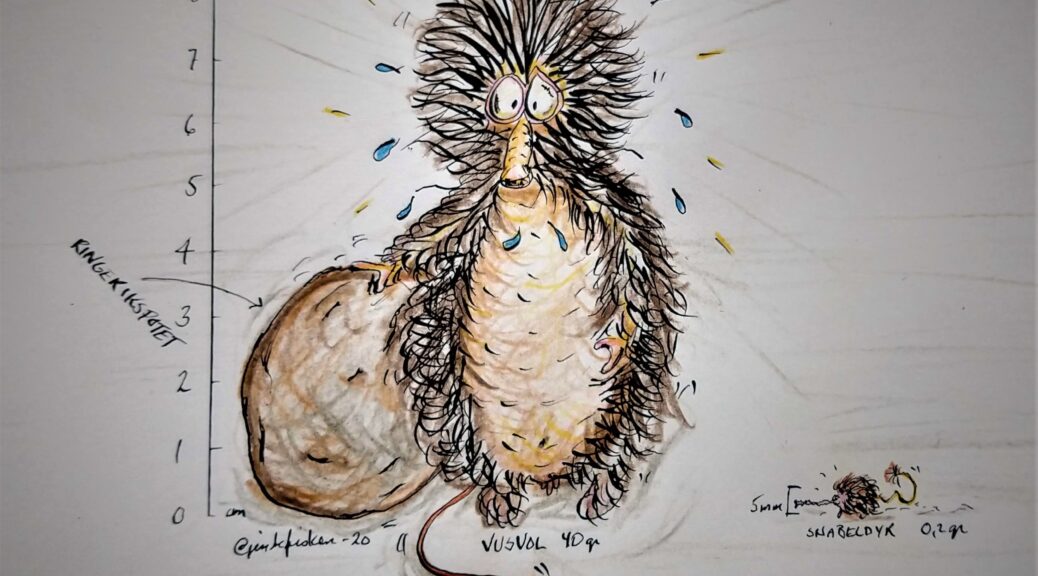
Point to Paper – Is the Norwegian Longnosed Earmouse related to the Vusvole?
Today there will be scrutiny and debate. The big question is whether the longnosed earmouse, first found in the fishing village of Langesund, is a relative of the vusvole, native to an area in Norway called Sunnmøre. The pronunciation of vusvole is a combination of the sounds similar to the words juice (in the first part of the word) and mole (in the second part).
The animals were recently put in connection with each other for the first time. For new readers it is strongly recommended to read the story about the Norwegian longnosed earmouse before you continue. It is an in-depth article about the creation and discovery of this unique species. In the current article I will to some degree take for granted that the readers have some basic knowledge on the topic. I would also like to remind the readers that some see both these animals as pure fiction, while others claim they are at as least as real as the American Sasquatch. A comment from a reader, in connection with the previously published article, has ignited considerable debate. Today’s post is intended to show that we take input from our readers seriously.

Our blogg wants to contribute to promoting good learning experiences. Among other things, we have ambitions to raise the readers’ competence in being able to distinguish fake news from good stories. We distance ourselves from the first. In case of the latter, we feel a responsibility for both safeguarding and developing it further.
Today’s post will also be a meeting between artists that have different preferences when it comes to ink. Kjell Aukrust often drew with India ink , while I prefer drawing with iron gall ink. Iron gall ink offers possibilities for even thinner lines than India ink. Like Aukrust, I like to draw with a dip pen .
One of our observant readers, a local rodent-interested bank employee from the village Krokstadelva, has suggested that there are certain similarities between the longnosed earmouse and the vusvole. This observation will be addressed here, and any suspicions of confusion on our part will be strongly refuted. The post will clarify the most important differences between these exotic creatures. Readers will be presented with irrefutable evidence. Despite some apparent common features, the vusvole and the longnosed earmouse belong to two different species.
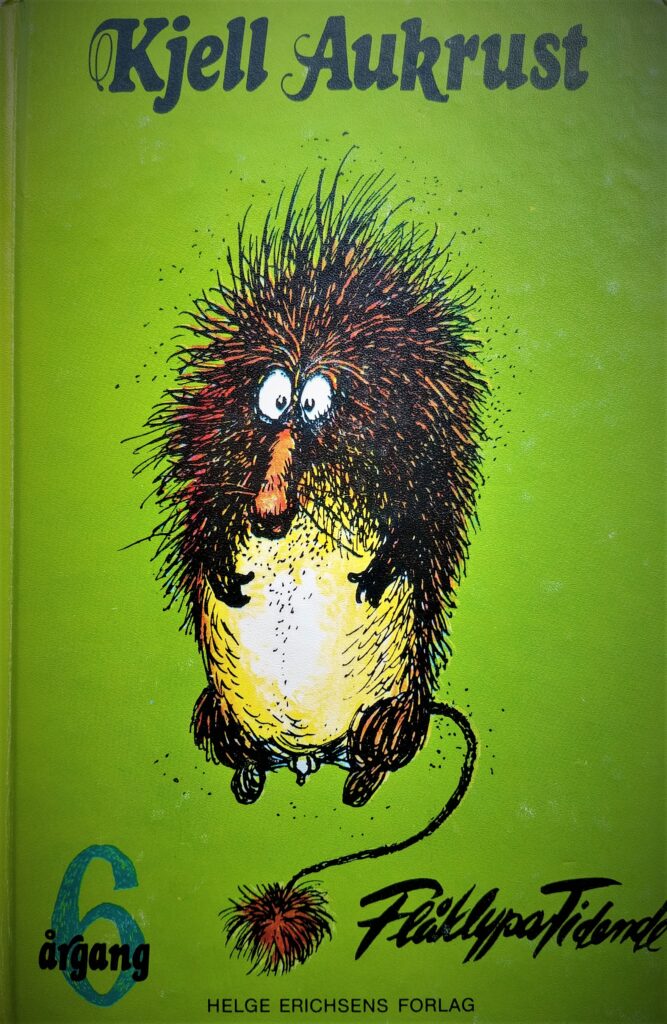
The vusvole was described for the first time by the author Hallstein Bronskimlets in the local newspaper Flåklypa Tidende 6th edition from 1978. The vusvole, Ruptimus Vulgaris (Aukrust 1978, p.5), is described as a barefoot walker. In the same book, the vusvole is also referred to with the Latin name Eximus Vulgaris (Aukrust 1978, p.7), but as far as we have been able to clarify, the most commonly used name is Ruptimus Vulgaris.
A full-grown male vusvole is claimed to be as tall as two Ringerike potatoes stacked on top of each other. According to the legal data for the Ringerike potato, an approved specimen of this type of potato must be between 25mm (1 inch) and 52mm (2 inches) in diameter. The article in Flåklypa Tidende in addition describes the size of the vusvole as follows (Aukrust 1978, p.5 [my translation to English]): “If you divide a normal loaf of whole wheat bread in half and then cut suitably thick slices of bread outwards from the middle towards the end crust, the male vusvole will have a size corresponding to bread slice number 6 and the female to the slice of bread number 7.” The vusvole cub is described as having a size corresponding to the extent of the end slice of the bread (also called the end piece, the heel or the butt in England or the doorstop or the ootsider in Scotland).
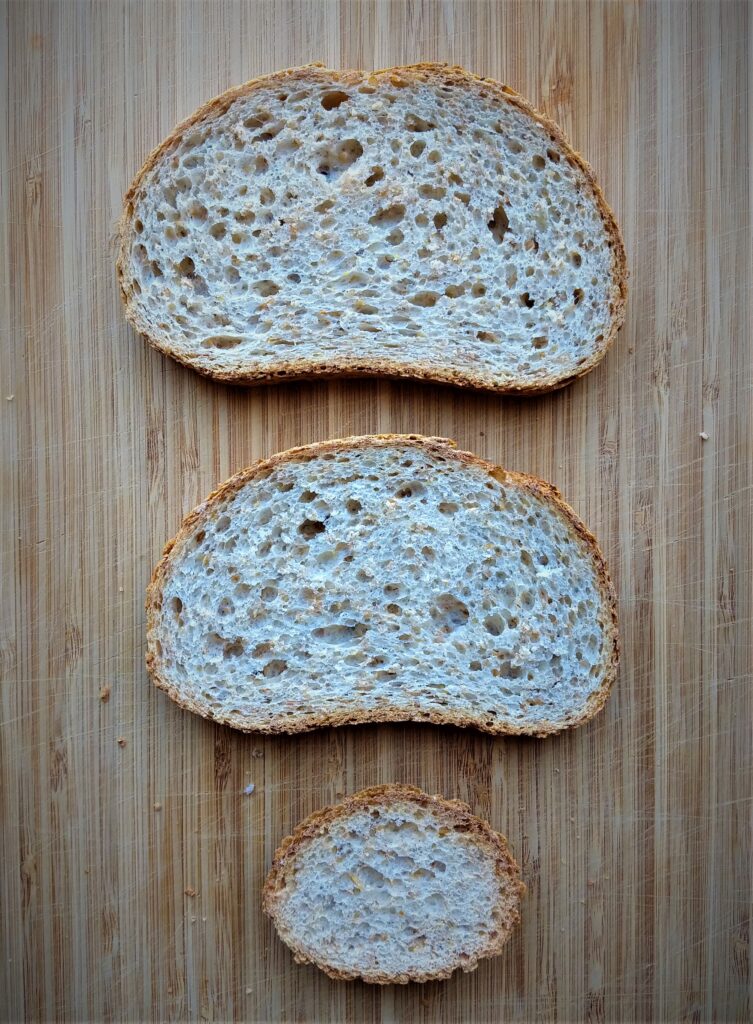
Since “ordinary oven bread” and “equivalent to the extent of” are somewhat unclear terms, I have instead taken our local, popular and tasty bread as a starting point. The bread goes under the name Grislet Kneip. In this way, through empirical experiments and comprehensive analysis of all the available data, I have estimated the size of the vusvole. The bread I have chosen is a standard bread from Baker Klausen (not related to Santa) made in the village of Krokstadelva 50 kilometers (31 miles) from Oslo.
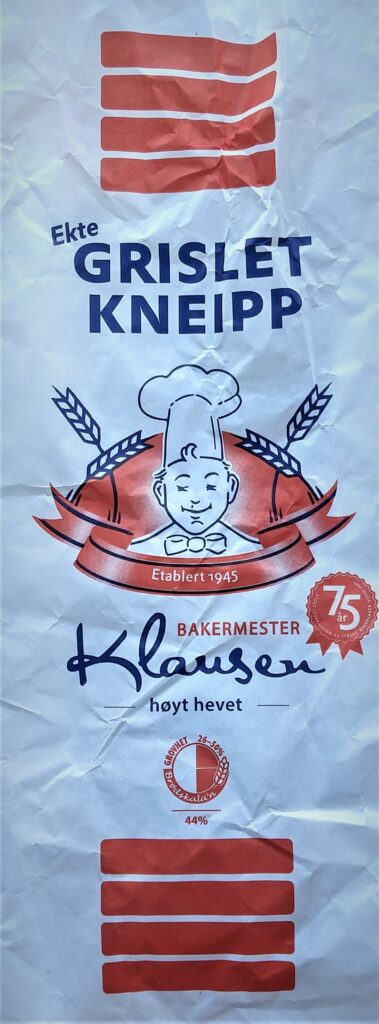
As a former chef, I have also benefited greatly from my in-depth knowledge of the Ringerike potato. The potato is familiar to me from the preparation of countless Christmas dinners. The Ringerike potato is often served as a side dish to traditional Norwegian dishes like rakfisk (fermented trout) and lutefisk (dryed cod rehydrated with water and lye). As a result, I have come to the conclusion that the estimated height of a male vusvole, standing on its hind legs, is approximately 8 cm (3 5/32 inches). The female vusvole is estimated at approximately 7 cm (2 3/4 inches) and the vusvole cub is approximately 4 cm (1 37/64 inches).
Unfortunately we know little about the genetic profile of the vusvole as no one has yet managed to catch one. There may be opportunities for better data in the near future. There are rumors that the vusvole has recently been observed in potato fields in the areas of both Lier and Øvre Eiker. Hard evidence is still lacking. Neither images nor any form of genetic material has so far been collected. The researchers fear that the observations that have been made recently are only of the local European water vole. The farmers of Lier and Øvre Eiker are furious. One farmer told me: “Do the arrogant gentlemen at the universities really think the farmers in the area can’t tell the difference between a water vole and a vusvole?” Another of the local farmers has come with the following comment: “In Lier and Øvre Eiker we trust each other’s word.”
In the previous article the readers were introduced to the longnosed earmouse. It was discovered by chance as it was stuck in the ear of a local fisherman in Langesund in the summer of 2019. The fisherman had complained about constant rattling and tickling in his left ear. He chose to contact the local doctor at the end of the season. It turned out that the fisherman didn’t have an inflammation, but surprisingly had a hairy creature living in his ear. The animal had gotten stuck in the fisherman’s very hairy ear canal. The furry rodent was easily removed at one of the medical centers in Bamble municipality. The doctor who performed the operation had never seen anything like it and sent the creature to the nearest university. Since then, several sightings of the longnosed earmouse have been made. The residents of Langesund have become more aware and have started noticing the modest little animal.
Researchers from several Norwegian universities have collaborated to classify the creature. Extensive analysis of the animal’s genetic profile has answered many questions. Several strange discoveries have in addition led to a number of new questions surfacing. The longnosed earmouse has existed in the local myths and tales since the dawn of time. Through their work, the researchers have confirmed that the myths are in fact true. They have even uncovered unexplainable mutations that have never been observed before.
The longnoed earmouse, now classified in Latin as Rodentia Elephandae Norwegicus, belongs in part to the shrew family Soricidae. The tiny critter also has a mysterious genetic inheritance from the sea urchin Echinoidea . Sea urchins are also called kråkeboller (crow buns) in many parts of Norway. The researchers have not been able to explain how this cross-breeding could happen. The local stories in Langesund explain it by claiming it is a special creation by the god Ninkilim .
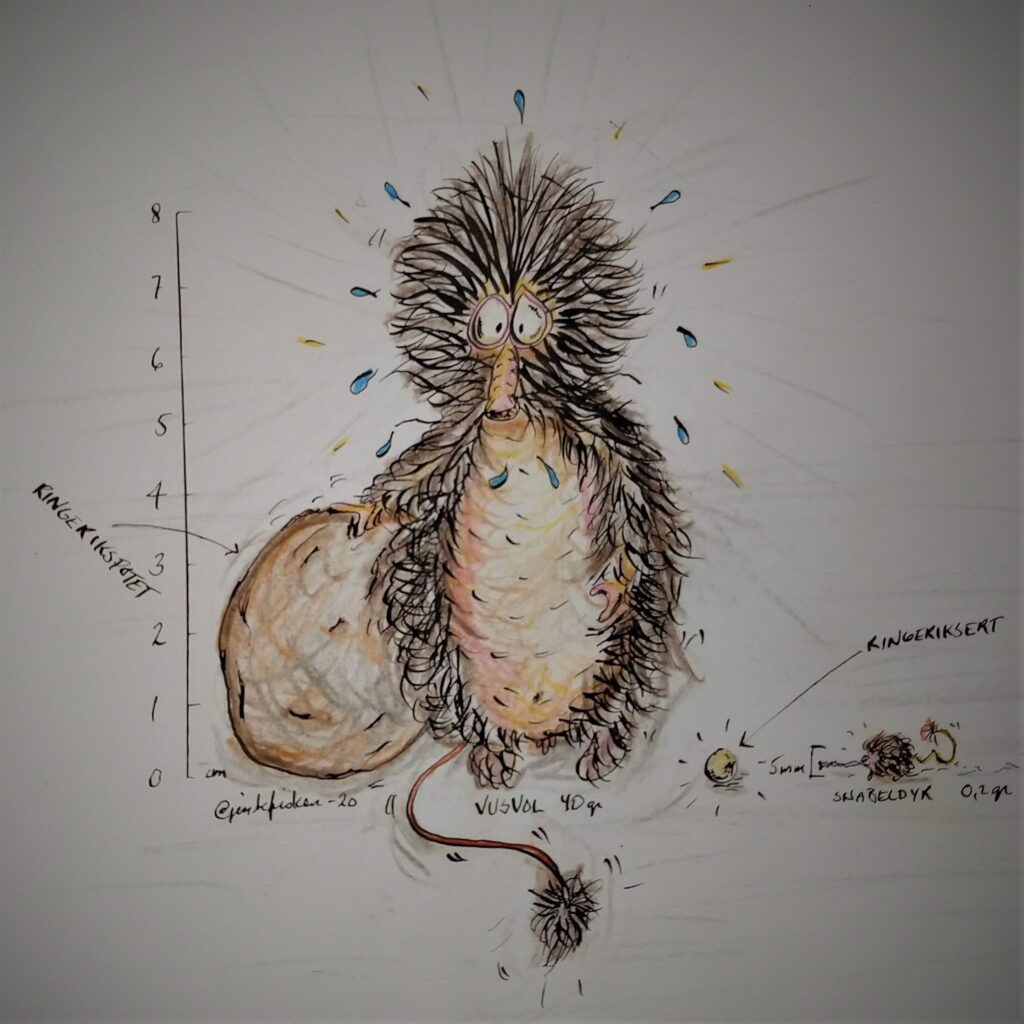
The longnosed earmouse further belongs to the earwax rodent family Rodentia Auris Ceruminea. A fully grown male is the size of a Ringerike pea (a special pea from the area of Ringerike). We have chosen to use a crop from the same area as the Ringerike potato for comparison since Flåklypa Tidende originally chose to use this type of reference in the article from 1978.
The closest genetic relative of the longnosed earmouse, the pygmy shrew (Suncus etruscus), weighs an average of 1.8 grams (0.063 ounces). The longnosed earmouse rarely weighs more than 0.2 grams (0.007 ounces). Compared to the longnosed earmouse, the vusvole is a giant. The vusvole is estimated to be able to reach a weight of 35-40 grams (1.2 to 1.4 ounces). The snout of the vusvole is estimated to be approximately 1/6 of it’s body length, while the proboscis (the mini trunk or the nose) of the longnosed earmouse, in its maximum extended state, is 25% longer than the body. When the longnosed earmouse is relaxed, the rule of thumb regarding the proboscis, body and tail length ratio is: 1/4 proboscis, 1/4 body and 2/4 tail. Longnosed earmice seen with bulbous cheeks are most often males. This is how they collect earwax for their cubs. The male longnosed earmouse is a caring father to his the newborn babies. He knows that the mother has plenty of other tasks to fulfill.
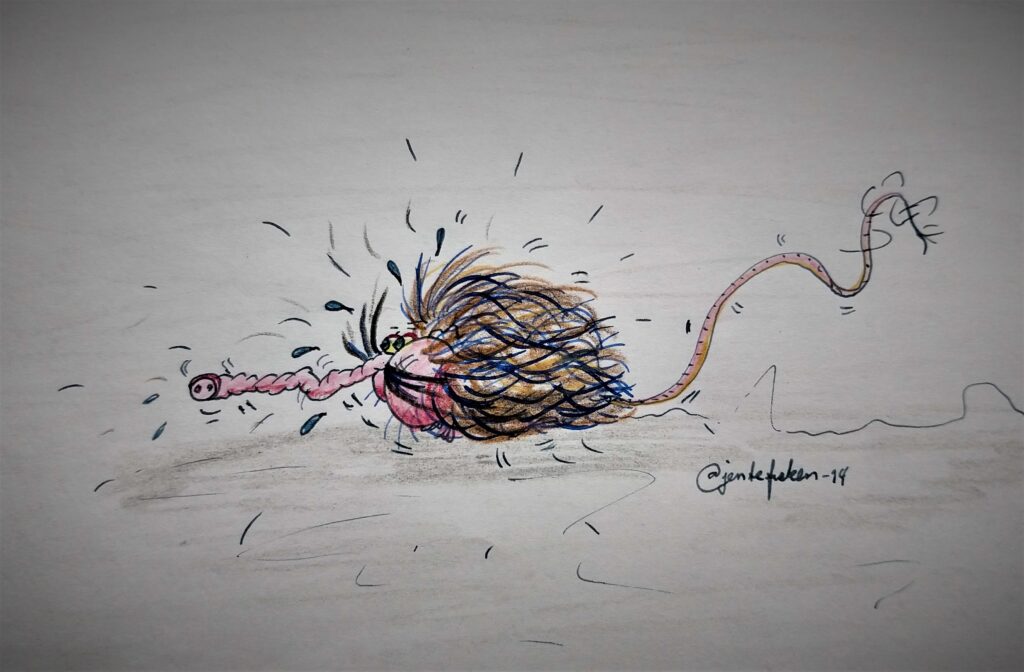
You should be warned against teasing the longnosed earmouse. The animal is usually peaceful, but repeated tormenting can lead to an extreme metamorphosis. This is something one of the researchers recently experienced after conducting an overly extended close examination of a slightly hungry and irritable specimen. The longnosed earmouse particularly dislikes being laid on its back with its belly exposed. The male can become very aggressive when poked on the soles of its feet, on its sensitive nose or on its genitals. A similar reaction can also occur with the female, but most often this can happen if she feels that her young are in danger. In cases of extreme metamorphosis, people in the immediate vicinity are advised to seek cover. Their bite can be very painful. The seizure is usually over within 16-18 minutes. The longnosed earmouse quickly returns to its warm and sociable, but shy mood. A small treat in the form of earwax may be necessary to re-establish trust.
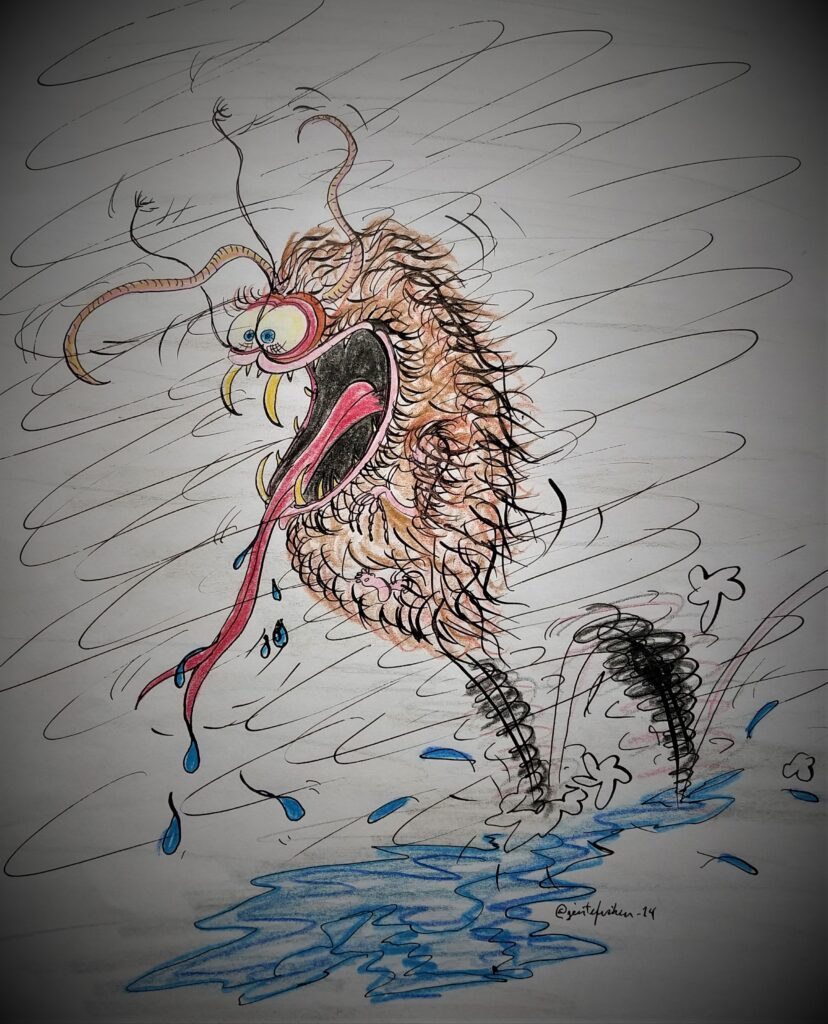
Literature
Aukrust, K. (1978). Flåklypa Tidende 6. årgang. Oslo: Helge Erichsens Forlag
Midtbø, T. (1979) Fenomenet «Flåklypa» – fra avisparodi til kulturindustri. Oslo: Novus Forlag
Sandbakk, M. S. (2018). No vert det spanande – Komikk og karneval i Flåklypa Tidende. Kongsberg: Universitetet i Sørøst-Norge
Illustrations and pictures
All drawings in this article are made by Kjartan Skogly Kversøy unless otherwise stated. All the pictures in the article were also taken by Kversøy. The green book photographed by Kversøy is illustrated by Kjell Aukrust. Many references can also be found by following the links in blue lettering.
One thought on “Point to Paper – Is the Norwegian Longnosed Earmouse related to the Vusvole?”
Jeg setter stor pris på at du bringer kunnskap om norsk fauna ut til de uskolerte massene i verden.